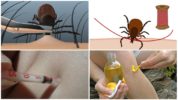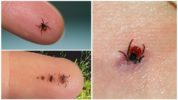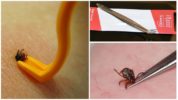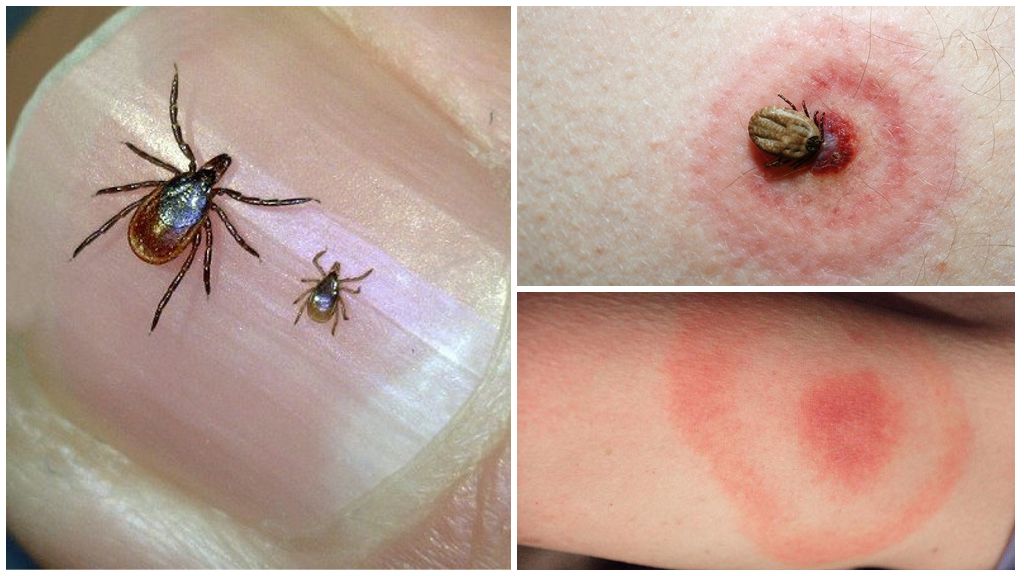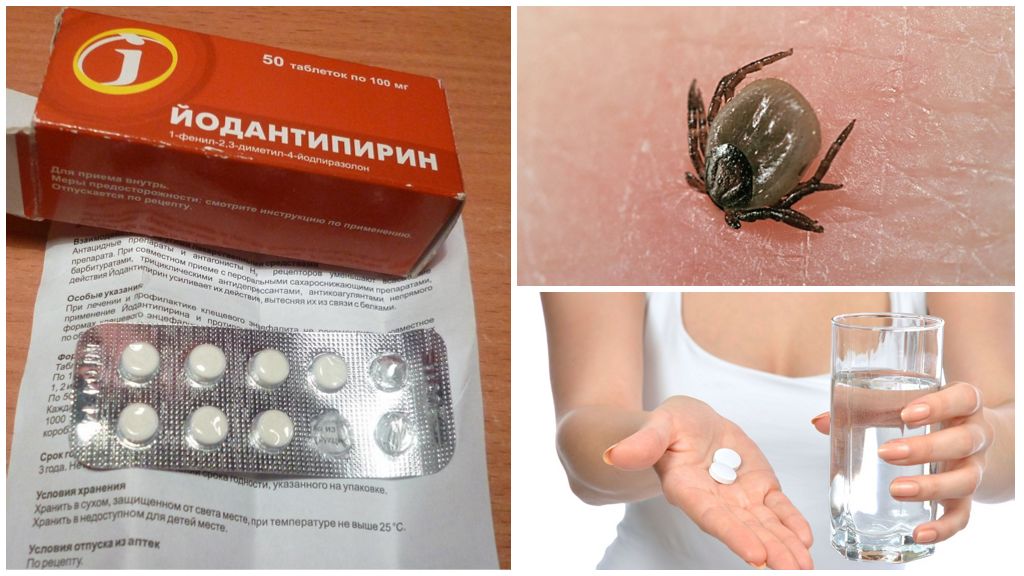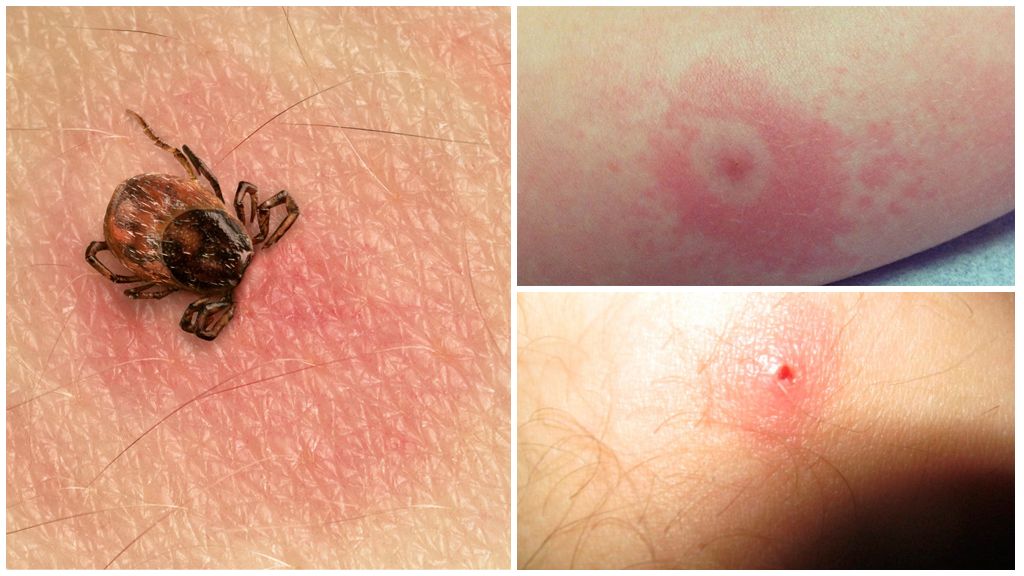- Tick Removal Methods
- Finger extraction
- Tick removal with special tools
People walking in nature are surprised at how enormous quantities have divorced today. ticks. There is no secret here. In Soviet times, forests were sprayed with insecticides from aircraft to control the number of ticks and caterpillars. After the collapse, this practice ceased and arthropods were given complete freedom. Previously, little attention was paid to methods for extracting a sticky tick, since not only the number of arthropods, but also diseases of wild animals were controlled. Today, knowledge of how to remove a tick has passed into the category of life-necessities.
Where it sticks
Once on the clothes, an arthropod for an hour can look for a place to stick. Usually he finds places with thin skin and nearby blood vessels:
- popliteal space;
- groin area;
- elbow bend of the hand;
- armpit;
- behind the ear;
- temple;
- occiput;
- scalp.
There is a chance to remove the tick before it reaches the indicated places. But if necessary, he can glare anywhere. The free-crawling tick must be destroyed; attributed to research.
Important!
Ticks are dangerous due to the increased number of cases borreliosis and tick-borne encephalitis. Cases of borreliosis are already found in Moscow. But you simply cannot take and pull out the bloodsucker from the skin, there are certain conditions under which the tick will be taken for analysis.
Laboratory Admission Conditions
To analyze the tick, you need to correctly pull it out, otherwise there will be no sense from the analyzes. For research take:
- living arthropods;
- not smeared with any substances;
- no later than 2 days after extraction.
To prevent the bloodsucker from dying during transportation, wet paper is placed in a jar with a tick to create suitable humidity.
It’s best if the doctors themselves take the tick right in the hospital, but this is a lost time. Therefore, information on how to remove a tick from a person at home will not be superfluous. And then it all depends on the circumstances.
Important!
The longer the tick feeds, the higher the risk that it will transmit the infection.
Tick Removal Methods
Folk and not very ways to remove a tick in humans, there are several. Almost all of them require additional tools:
- tweezers;
- syringe;
- thread;
- industrial mite extraction devices;
- needle;
- ring and sunflower oil.
The only way that does not require any devices is to remove the tick with your fingers. For any extraction path, it is necessary to pull out the tick head.
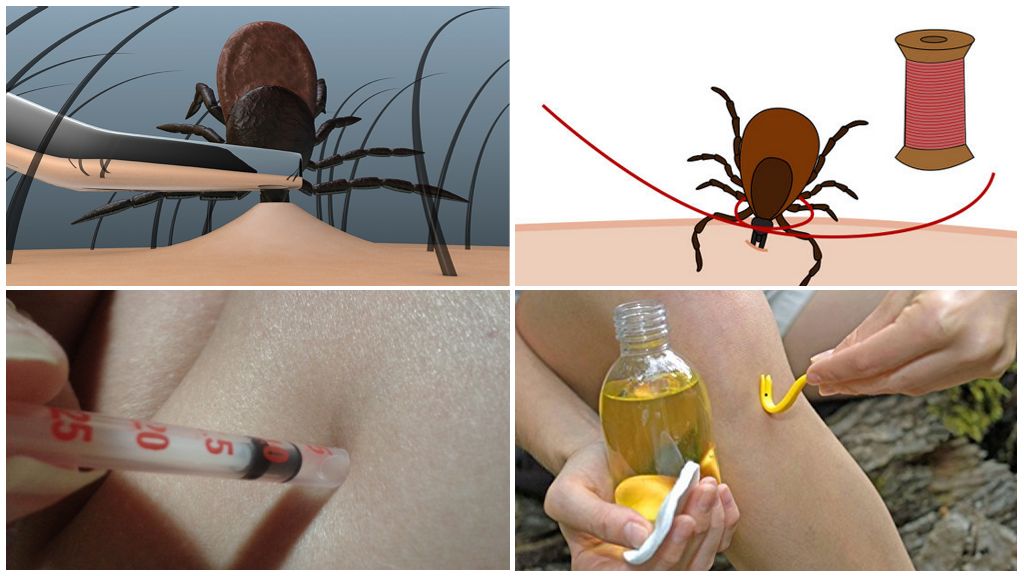
What can not be done when deleting
There are certain actions that will lead to the death of an arthropod. In this case, the tick relaxes the proboscis, and the blood sucked by it along with the causative agents of the infection returns to the victim's body.
Therefore, you cannot:
- sharply yank the animal;
- squeeze the body strongly;
- pick out something sharp;
- “Gnaw” with teeth;
- cauterize
- lubricate arthropods with gasoline, various detergents and other household liquids.
Ticks with any removal methods are not pulled out, but unscrewed. Among illiterate methods, how to get a tick, earlier variants using oil or a hot needle were common. Today you can also meet these tips, so it makes sense to start with them.
Oil
The parasite can indeed be pulled out with oil. But not necessary. The respiratory tract of the parasite is located on the back of the body. To remove the tick in this way, you will need vegetable oil and a wedding ring. The ring is placed so that the bloodsucker is inside the perimeter. Oil is poured into the ring and they wait until the panting arthropod comes out by itself. In the absence of a ring, it is proposed to simply anoint the tick so that it comes out.
Important!
An arthropod may not come out and die directly in oil. The second scenario: a terrified animal by choking can burp the sucked contents back into the wound. The same thing happens if the arachnid-like is simply greased with an oily liquid.
Even if the tick survives and crawls out, it will not be possible to return it to the clinic, since “oily” animals are not accepted for analysis there. For the same reason, it is impossible to lubricate arachnoid-like gasoline, cream, detergent and other chemicals.
Needle
An ancient way of the middle of the last century: to pierce the abdomen of a tick with a red-hot needle.
Important!
This is not a valid method.
It will be possible to remove the pest in this way. Having previously received a portion of saliva and intestinal contents in the blood with possible pathogens. A semi-burnt corpse will not be suitable for analysis. The same goes for cauterizing a cigarette.
There are more reliable and safer ways to get rid of the tick on the body. But their security level is different. You can arrange these methods to increase safety for humans.
With fingers
This method is not reliable, since the abdomen of a bloodsucker will certainly be squeezed. But the newly sucked parasite can be pulled out on its own, without resorting to other methods.
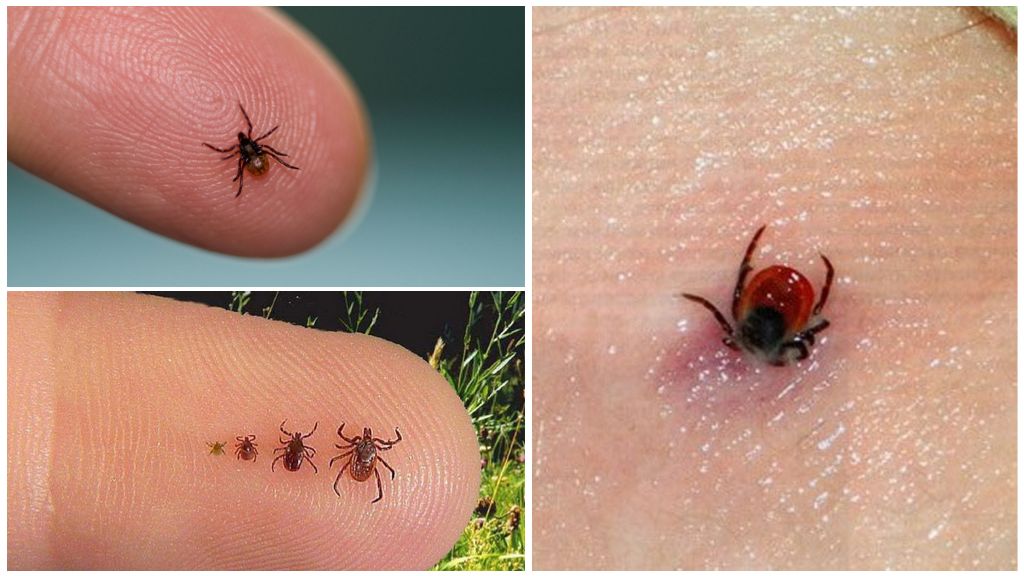
Important!
Do not grab the tick by the body. Arthropods are captured with fingers so that the nails are located as close as possible to the skin and under the chest of the pest. Then do not pull it out, but carefully unhook the tick. When removing, it is important to remember in which direction to unscrew the tick: clockwise or counterclockwise. When sucking, the arthropod twists clockwise, so you need to remove it by turning counterclockwise.
Syringe
You can remove the sticky tick with a disposable syringe, although this is a laborious method. From an insulin or 5-cc syringe, the tip with the nose is cut off, trying to make the cut as even as possible. Then they put the syringe to the place where the animal sucked and pull the piston.
It is claimed that the created vacuum will pull the arthropod out of the skin. The method works if ixod have not yet managed to bite into the skin (concerns taiga) or have not had time to drink blood properly. Otherwise, there is a chance, instead of a whole creature, to get spray of the insides in the syringe and an empty shell from the parasite in the skin.
Tweezers
A slightly sucked arthropod can be quickly pulled out with tweezers.
Important!
It should be tweezers, not eyebrow tweezers.
The ends of the tweezers are brought under the body, placing the tool perpendicular to the parasite. Ixoda is removed by turning the tweezers counterclockwise. Roughly pull it out, as the head may remain in the skin.
Thread
The most time-consuming way to remove a tick, requiring considerable skill. You can get a parasite with a thread only if its head has not yet managed to enter the deep layer of the epidermis as in the photo.
While the head is still outside, a loop is thrown over it.This procedure requires some skill and is not available to everyone, since too small a tick will “pop out” of the loop, and it’s better not to bring it to a large one. After the loop has safely been tightened on the head, and not on the abdomen, you can begin to get rid of the aggressor using the same method of twisting it from the skin.
Industrial tools
This is the most competent and safe way to get arthropods out of the body. The most popular brand is Nippes tweezers, more like a nail clipper. Such special tools Today there are quite a lot, but they all have one removal algorithm: a foot with a slit is brought to the parasite. To remove the animal, tweezers must be twisted counterclockwise.
This tool is most convenient if you need to pull a sucking parasite from your head. There it is very inconvenient to use any other options, except for the "oil", which is better not to use at all.
On a note!
The pluses of the tools are that the tick can be guaranteed to be pulled out unharmed to transfer it to the clinic. They are inexpensive and it is useful to have them in the house, especially if the family has a child.
What to do if it was not possible to extract the tick whole
Do not panic. By no means always with improvised means it is possible to pull out the ixoda as a whole. Doctors recommend in this case sanitize a wound and wait until an abscess forms. The remains of the ixodus will come out themselves with pus.
Those who do not want to wait can try pull out the remnants of the tick using a sanitized needle. Just as a splinter is removed.
Doctors Recommendations
Usually, doctors recommend the following sequence of actions:
- gently pull out the tick;
- put it in a clean jar for analysis / burn;
- disinfect the bite site;
- if the head remains in the skin, lubricate the wound with iodine;
- Wash the hands.
If you do not remove the tick on time, it will finally bite into the skin and pulling it out will be very difficult until he will not fall off. The female can drink blood for a week. During feeding, the individual will inject a significant amount of saliva, which can be with the causative agent of the disease. If after tick bite after a few days the malaise appeared temperature appeared and vomiting, you should contact the clinic, always mentioning the bite.
It is advisable that specialists remove the parasite, “in a simple way” it should not be torn off. Although dog owners often remove bloodsuckers in this way.
